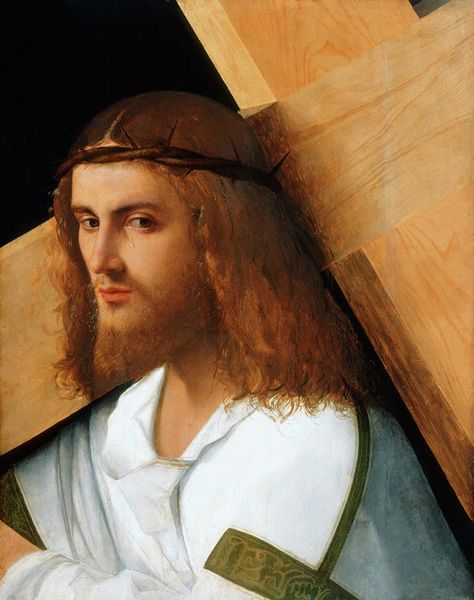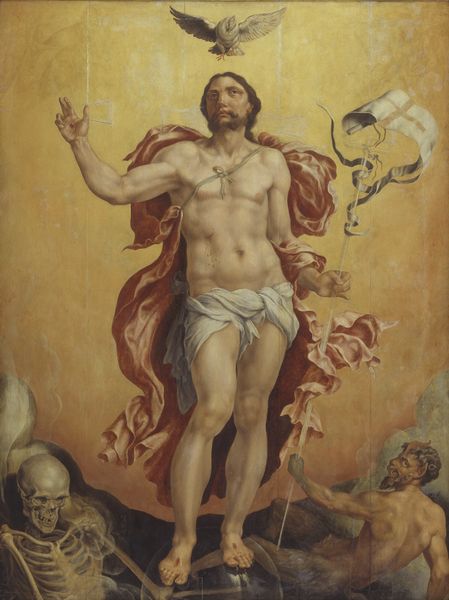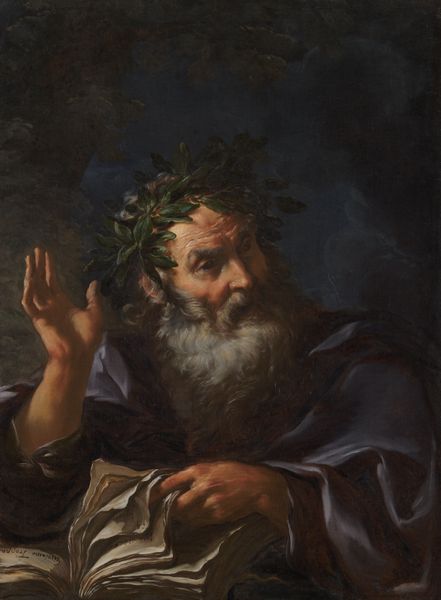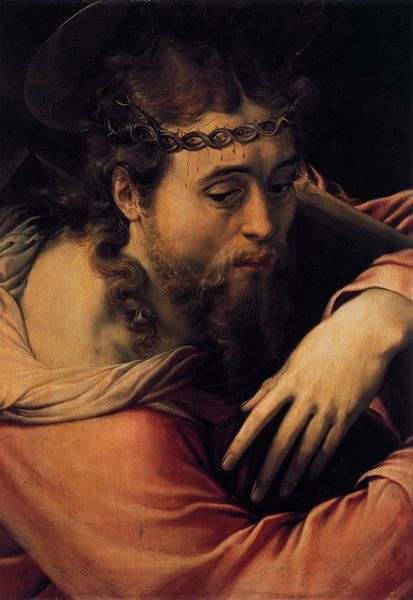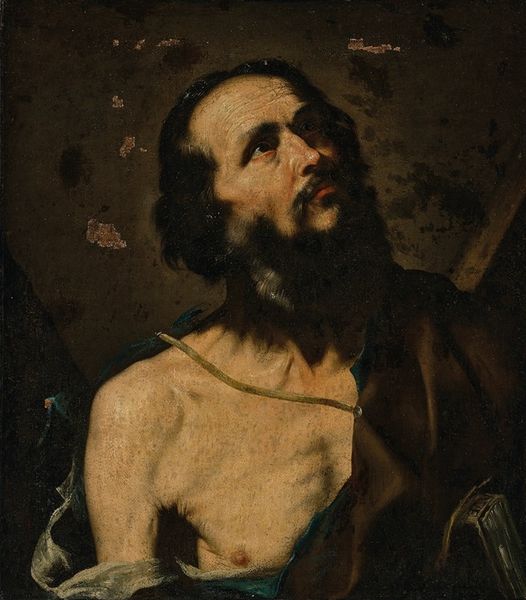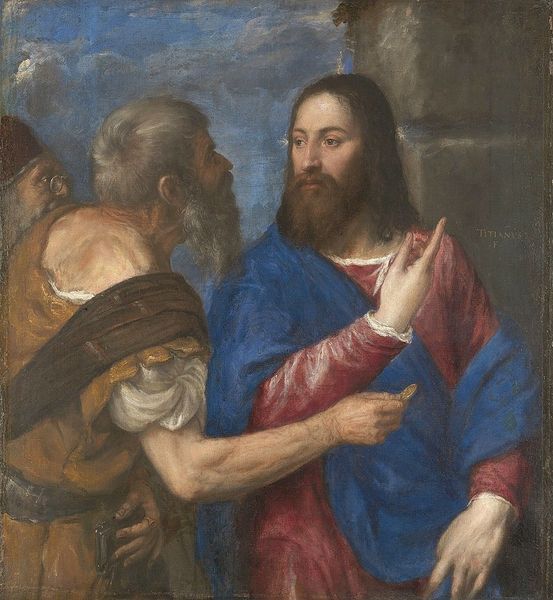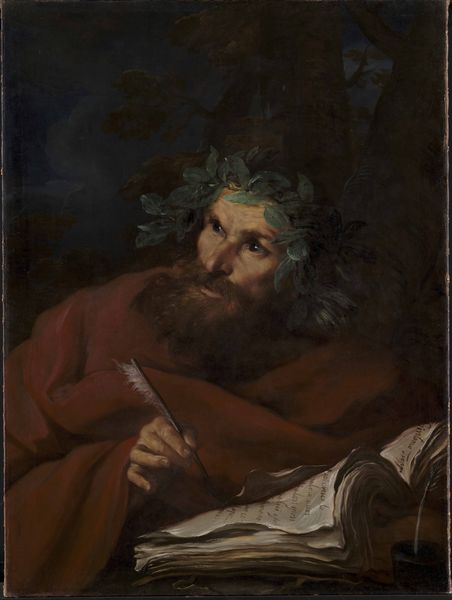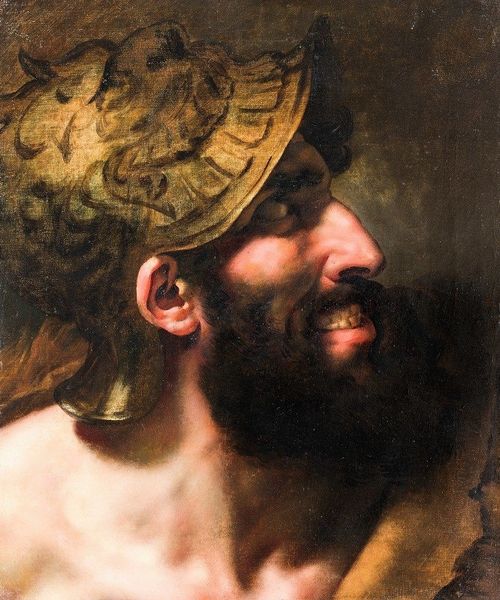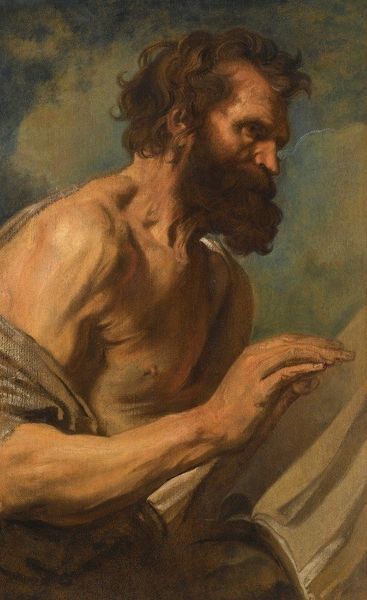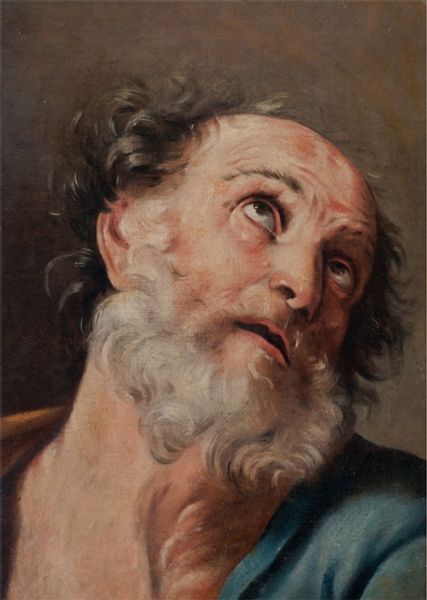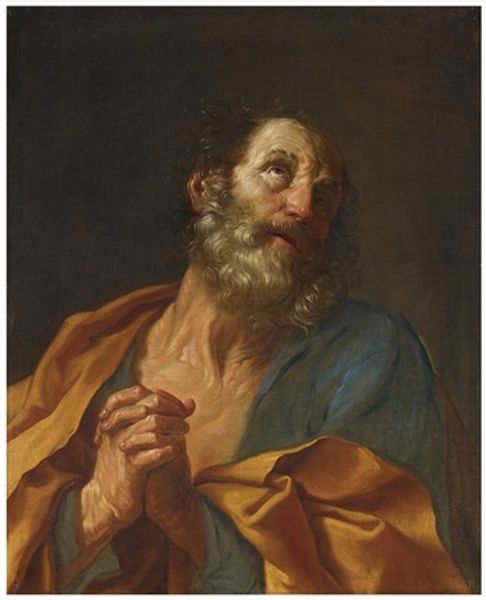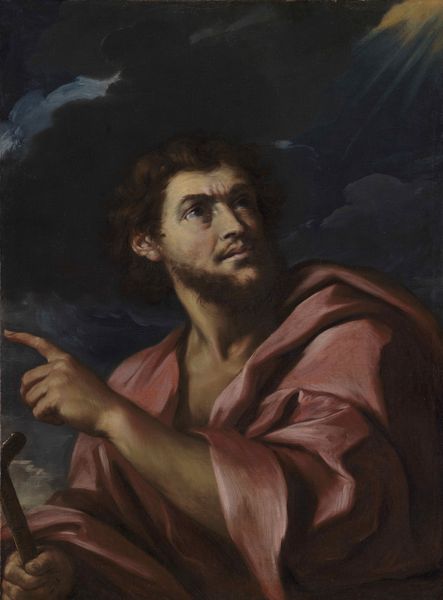
painting, oil-paint
#
portrait
#
neoclacissism
#
portrait
#
painting
#
oil-paint
#
classical-realism
#
figuration
#
history-painting
#
academic-art
Copyright: Public domain
Curator: Here we have a striking oil painting entitled "Pindar and Ictinus" by Jean-Auguste-Dominique Ingres. It embodies the spirit of Neoclassicism. Editor: The initial feeling is somber but dignified, isn't it? The stark lighting and limited palette really contribute to that weighty, classical vibe. Curator: Absolutely. You immediately perceive Ingres' mastery in the figure of Pindar, the renowned lyric poet crowned with laurel. Ictinus, the architect of the Parthenon, is presented beside him with what seems to be architectural blueprints. Notice Ingres' technique and devotion to the classical form; his strokes give the piece such depth. Editor: And I see an allegorical nod to their respective arts; poetry immortalized in verse by Pindar and materialized in stone by Ictinus. Curator: Indeed. The choice of presenting Pindar and Ictinus together isn't random, it's Ingres' reflection upon the enduring power of artistic genius across time. He sees parallels between poetic and architectural brilliance, perhaps subtly suggesting that each builds enduring structures of their kind. Editor: Ingres really zeroes in on detail here. Check out how carefully the robes drape. Light and shadow aren't just filling the space; they seem almost sculpted. But still the humaneness radiates in those eyes. Curator: You feel it, right? The intention to breathe life into figures of history, and not merely create stiff representations. While some may find the painting restrained in its emotional expression, for me, it achieves profound elegance. Editor: Right. This kind of classical form allows us to really dig into the depth of its narrative. Thanks to his thoughtful brushwork and subject choices, Ingres brings us back to the age of gods, where, it feels, artistic merit and innovation thrive.
Comments
No comments
Be the first to comment and join the conversation on the ultimate creative platform.
